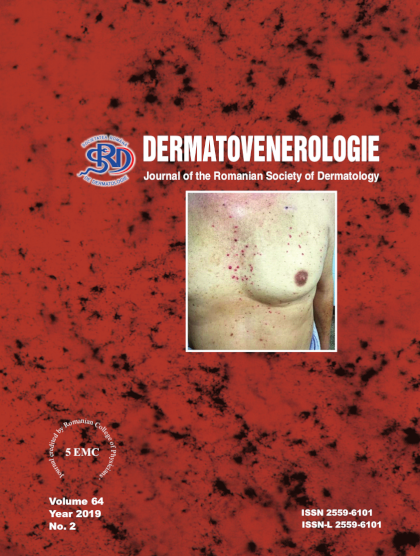Rosacea is an inflammatory disease with centrofacial
localization and a prevalence between 1 and 22%, and it
predominantly affects women. Clinically, it is manifested
by erythema, telangiectasia, papules and pustules,
concomitantly or in independent stages. Rosacea features 4
stages of evolution: stage I erythematotelangiectatic, stage
II papulopustular, stage III phymatous and stage IV with
ocular damage. The following are among the factors
involved in the aetiology of the disease: age, skin phototype,
gender, alcohol consumption, exposure to UV radiation,
vascular, digestive and psychoemotional factors.
Analysing the studies published in the specialty
literature for a period of 6 years, I have synthesized the
therapeutic realities and the main therapeutic lines
recommended by the new international guidelines for
rosacea acne.
Treatment of rosacea is complex and varies depending
on the stage of the disease. The use of SPF50
photoprotective creams is recommended for all stages of the
disease. In topical treatment, a beneficial effect can be
obtained by applying azelaic acid gel 15%. The most
commonly used systemic treatments are antibiotics, more
frequently in the cycline class for a period of 3 months and
retinoids. Modern methods such as Nd:YAG laser and IPL
are also easy to access and beneficial for the treatment of
erythematous lesions.
Treatment of rosacea needs to be individualized, with
several local and systemic therapeutic lines available.
General reviews
NOVELTIES IN THE MANAGEMENT OF ROSACEA


